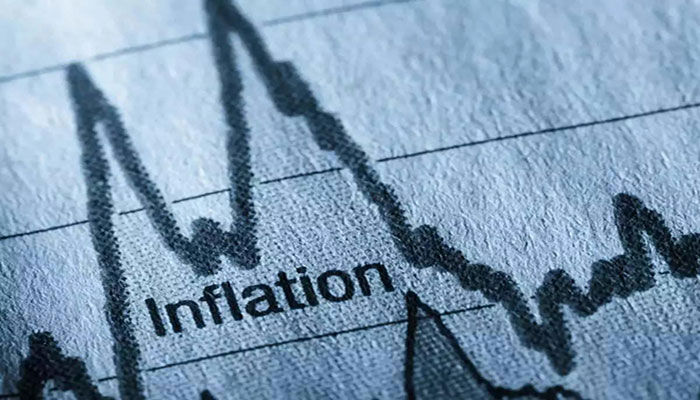Inflation hits 29.2% in November, dashes hopes for interest rate cut
Pakistan’s inflation rate accelerated to 29.2% in November 2023, up from 26.9 percent the previous month, dashing market expectations
ISLAMABAD: Pakistan’s inflation rate accelerated to 29.2 percent in November 2023, up from 26.9 percent the previous month, dashing market expectations for a State Bank rate cut in the upcoming December 2023 policy decision meeting. The bank is likely to keep the discount rate unchanged.
The inflationary surge was attributed to a significant increase in gas tariffs in November, a condition imposed by the IMF for the country to qualify for the bailout programme. The elevated gas tariffs led to a sharp uptick in housing and utilities costs, soaring to 33 percent from October’s 20.5 percent. Housing and utilities carry nearly one-fourth of weightage in the Consumer Price Index (CPI), contributing to the overall rise in headline inflation.
In October, CPI inflation had decelerated to 26.9 percent from a four-month high of 31.4 percent in September.
The average inflation for the first five months of FY2023-24 reached 28.6 percent, surpassing the government’s target of 21 percent and State Bank of Pakistan’s (SBP) range of 20 to 22 percent for the ongoing fiscal year.
Food inflation in November also increased to 28 percent, up from the previous month’s food inflation of 26.8 percent, which was a 16-month low. In September, it stood at 33.1 percent.
Notable declines were observed in inflation for alcoholic beverages and tobacco, reducing to 82.8 percent from 84.6 percent in October. The category of recreation and culture also decreased to 53.56 percent, lower than the 56.34 percent recorded in October.
Hotel and restaurant charges in November increased by 31.5 percent, slightly lower than the 33.1 percent in October. Transport expenses also decreased to 26.5 percent from 31.3 percent in the previous month. Furnishings experienced a decline to 34.5 percent, down from 37.1 percent in the previous month. Health expenses also saw a slight decrease to 24.87 percent from 25.2 percent.
Meanwhile, in November, price growth showed slight increases in communication, rising to 7.41 percent from 7.37 percent. Similarly, for clothing and footwear, the rate increased to 20.9 percent from 20.6 percent, and education expenses saw an uptick to 13.6 percent from 12.8 percent in the previous month.
Notably, in May 2023, inflation was at its record peak of 38 percent. Since November 2021, inflation remained persistently elevated and in double-digit territory.
Over October, the inflation increased by 2.7 percent, the highest in four months, following a 1.1 percent gain in the previous month.
Notably, the core inflation, which excludes food and energy components, year-on-year arrived at 18.6 percent against 18.5 percent in October and 14.6 percent in November 2022. Over previous month, it increased 0.9 percent.
The wholesale price index (WPI), a measure of producer prices, rose to 26.4 percent in November from 24.6 percent in October. The sensitive price indicator (SPI), which tracks the prices of essential items on a weekly basis, was recorded at 30.6 percent against 34.2 percent in October.
The PBS data further revealed that urban inflation was at 30.4 percent and rural at 27.5 percent. In the previous month, urban inflation was at 25.5 percent and rural at 28.7 percent.
On a month-on-month basis, tomato price increased by 60.4 percent, potatoes 15 percent, tea 13 percent, onions 12.3 percent, dry fruits 7.9 percent, fish 7.8 percent, eggs 7.2 percent, fresh vegetables 4.5 percent, beverages 0.83 percent, honey 0.7 percent, readymade food 0.53 percent over the previous month.
However, gur price got reduced 10.44 percent, sugar 8.5 percent, condiments and spices 7.9 percent, gram whole 4.3 percent, pulse gram 4.1 percent, pulse masoor 3.9 percent, cooking oil 3.7 percent, besan 3.4 percent, mustard oil 3.3 percent, pulse mash 2.9 percent, chicken 2.6 percent, vegetable ghee 2.4 percent, rice 1.5 percent, pulse moong 1.3 percent and wheat flour price was down by 1 percent.
Among non-food items, gas charges increased 280.55 percent, woolen readymade garments 8.2 percent, dental services 5.2 percent, transport services 5.1 percent, solid fuel 3.5 percent, woolen cloth 3.3 percent, doctor (MBBS) clinic fee 2.3 percent, hospital services 1.6 percent, education 1.3 percent and furniture and furnishing charges up 0.8 percent over the previous month.
Interestingly, the PBS data said that the electricity charges were reduced by 10.7 percent, motor fuel by 5.8 percent, liquefied hydrocarbons by 3.1 percent, motor vehicle accessories by 0.86 percent, motor vehicles by 0.75 percent and stationery by 0.2 percent.
On a year-on-year basis, condiments and spices prices increased 67.6 percent, wheat flour 63.5 percent, rice 68 percent, beans 55 percent, tea 52 percent, gur 50 percent, sugar 50 percent, beverages 46 percent, potatoes 42 percent, mash pulse 42 percent, wheat products 41 percent, and wheat price went up by 38 percent over the same month of last year.
However, onion prices were reduced 31 percent, mustard oil by 3.6 percent, tomatoes by 3.5 percent, and pulse gram by 2 percent.
Likewise, among the non-food items, on a yearly basis, gas charges were up by 520 percent, textbooks 95 percent, stationery 46 percent, washing soap/detergents/matchbox 44 percent, communication apparatus 40 percent, household equipment 36 percent, electricity charges 35 percent, drugs and medicines 35 percent and marriage hall charges increased by 34 percent over last year.
-
 Princess Beatrice, Eugenie Resort To Begging Sarah Ferguson: 'It'll Bring Disaster For The Whole Family'
Princess Beatrice, Eugenie Resort To Begging Sarah Ferguson: 'It'll Bring Disaster For The Whole Family' -
 Jenny Slate Hails Blake Lively Amid Lawsuit Against Justin Baldoni
Jenny Slate Hails Blake Lively Amid Lawsuit Against Justin Baldoni -
 Sophie Wessex Shares 'frustration' From Early Days In Royal Family
Sophie Wessex Shares 'frustration' From Early Days In Royal Family -
 Jason Momoa's Aquaman Unseen Snap Revealed
Jason Momoa's Aquaman Unseen Snap Revealed -
 Prince Harry Taught Only Way King Charles 'will Take Him Seriously'
Prince Harry Taught Only Way King Charles 'will Take Him Seriously' -
 Meghan Markle’s Reaction To UK Talks With Prince Harry Comes To The Forefront: ‘Leaving Me?’
Meghan Markle’s Reaction To UK Talks With Prince Harry Comes To The Forefront: ‘Leaving Me?’ -
 Taylor Swift Slams Justin Baldoni In Explosive Text Messages, Court Filing Reveals
Taylor Swift Slams Justin Baldoni In Explosive Text Messages, Court Filing Reveals -
 Blake Lively’s Drops New Allegations Against Justin Boldoni About Birth Scene
Blake Lively’s Drops New Allegations Against Justin Boldoni About Birth Scene -
 Andrew's Reasons For Giving Sarah Ferguson A Rent-free Home For 30 Years After Divorce Finally Finds An Answer
Andrew's Reasons For Giving Sarah Ferguson A Rent-free Home For 30 Years After Divorce Finally Finds An Answer -
 Charlie Puth Reveals Wake-up Moment That Made Him Quit Alcohol
Charlie Puth Reveals Wake-up Moment That Made Him Quit Alcohol -
 Meghan Trainor Welcomes Baby Girl Mikey Moon Trainor And Turns Emotional
Meghan Trainor Welcomes Baby Girl Mikey Moon Trainor And Turns Emotional -
 Meghan Markle Would Not 'hide Away' From UK For Harry's Sake
Meghan Markle Would Not 'hide Away' From UK For Harry's Sake -
 Why Keith Urban's Daughters Are Avoiding His Rumored Girlfriend? Source
Why Keith Urban's Daughters Are Avoiding His Rumored Girlfriend? Source -
 Sarah Ferguson Led Andrew To Jeffrey Epstein: ‘She Wanted Him To Ask For More Money’
Sarah Ferguson Led Andrew To Jeffrey Epstein: ‘She Wanted Him To Ask For More Money’ -
 Blake Lively Claimed Justin Baldoni 'made A Monster' Of Her, Court Docs Reveal
Blake Lively Claimed Justin Baldoni 'made A Monster' Of Her, Court Docs Reveal -
 Prince William Accused Of 'harsh Decisions' Over Disgraced Royal
Prince William Accused Of 'harsh Decisions' Over Disgraced Royal




